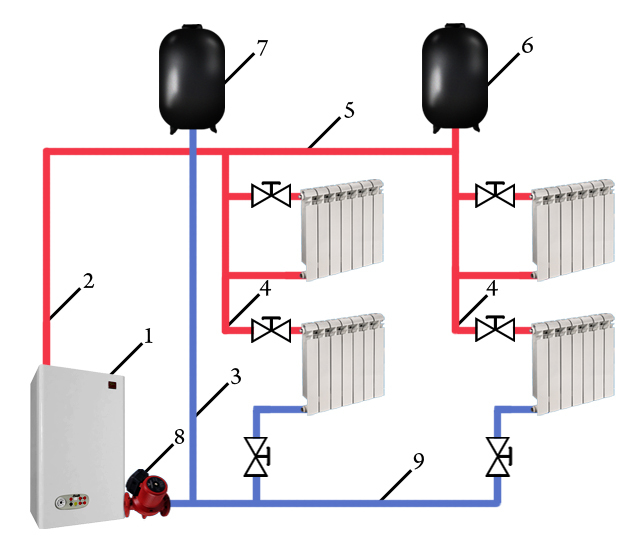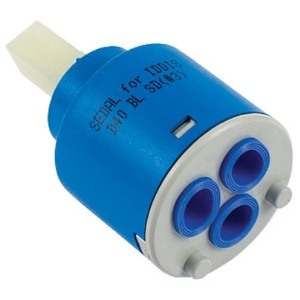Content
- Choosing a new heated towel rail
- Removing an old heated towel rail
- Thread cutting and pipe fastening
- Installation of a bypass on a heated towel rail
- Attaching a new heated towel rail
- The cost of replacing a heated towel rail
In many apartments, a heated towel rail serves not only to dry things, but also is responsible for maintaining the desired microclimate in the room. Over time, he becomes unusable or simply does not suit the owners with his appearance. And in old apartments it happens that it is simply poorly located. Then the question arises: how to properly replace the heated towel rail and is it realistic to do it yourself?

The complexity of the work will depend on many factors. In the simplest case, the services of a locksmith will cost one and a half to two thousand rubles, and the work will not take more than two hours. But if you need to make changes to the hot water supply system, the cost of installing a heated towel rail will increase quite noticeably. Even if you doubt your abilities and decide to hire professionals, it will be useful to know how to replace a heated towel rail in the bathroom. This will help to control the quality of the work carried out and to avoid future problems, the primary source of which is illiterate installation.
Choosing a new heated towel rail
How to change heated towel rail in the bathroom do it yourself the fastest and easiest? The replacement process will cause the least complications if the new model does not differ much from the old one. What should I pay attention to here?
The most important parameter can be considered the distance between the eyeliners. If it matches, then there is no need to modify the system for supplying water to the apparatus, and this is the most difficult and costly part of the job when replacing the heated towel rail. All produced varieties fit into a standard range of sizes between pipelines: 400, 500, 600, 700 and 800 mm. Having carefully measured the distance between the connections of the old heated towel rail, you can go to the store to buy a new one.

Another important point. Towel dryers come in two types: the heating element can be in the form of a ladder or a coil. Changing one view to another is problematic: hot water is supplied to the coil from the side, and in the model with a ladder - from above or from below.
USEFUL INFORMATION:Filters for cleaning hot water in the apartment
The dimensions of the heated towel rail and the mounting location are not critical. Even the mismatch in the diameter of the supply pipes is easily eliminated with the help of adapters.

Removing an old heated towel rail
The heated towel rail can be connected to heating or to pipes of hot water supply. The second option is preferable - then the bathroom will be warm and dry all year round.
In any case, you will have to contact the Housing Office or the local service company. Only their locksmith can block the hot water in the riser. Of course, no one will turn off the heating in the winter. In this case, the replacement of the heated towel rail in the bathroom is carried out in the summer. But still, you need to check whether the water from the heating system is drained. We open the tap on any radiator, substituting a convenient container under it. After checking, you can proceed to dismantle.

Well, if the old design was attached to the pipes using threaded connections. Then they can simply be unscrewed after draining the water from the system. But what to do if it is already impossible to unscrew the thread or if the old heated towel rail was simply welded? Have to cut pipes with a grinder. It is important not to forget that then these pipes will have to be threaded. To do this, leave a piece of sufficient length.
It is better if the cuts on both pipes of the towel rail eyeliner are strictly vertical. To do this, first outline the cut line with the help of a level. The cut itself must be perpendicular to the pipe. Having cut it off, we make small chamfers at the ends at an angle of 45 °, they will be needed for a free entry of the lehr when cutting threads.
At least two people must be dismantled: one works as a grinder, and the other supports a heated towel rail. Otherwise, it may fall or hold the disc in the grinder, which can lead to very sad consequences.
Having disconnected from the pipes, dismantle the fasteners and remove the old heated towel rail.
USEFUL INFORMATION:Washing machine siphon for washing machine

Thread cutting and pipe fastening
To connect to the riser, thread must be cut into the left parts of the pipe. It is most convenient to use a handle mounted on a ratchet with a long handle. Any lubricant must first be applied to the pipe. It is important to ensure that the lerka goes straight.
The thread is cut as follows: half a turn of the lead forward - a quarter turn back. You should not rush during this operation.
Which pipes are better to use?
- To supply water to the heated towel rail it is more convenient to use reinforced plastic pipes. It’s not necessary to buy a soldering iron for their welding, you can rent it from friends or rent
- You can use steel pipes, but their connection will require quite complex welding work. They weigh a lot and are subject to corrosion.
- Copper pipes do not rust, but they will have to be connected by soldering, and they cost a lot.
Fittings are wound on the resulting thread on the pipes. Flax tow and Unipak paste are used for compaction. There are recommendations to use waterproof sealants, but then the connection will turn out to be non-separable.

Installation of polypropylene pipes is simple. To connect them, various fittings, angles and couplings are used. An instruction is attached to the welding soldering iron, where the entire process of soldering pipes is described in detail. There are several important points:
- When soldering plastic pipes, it is strictly forbidden to turn them.
- To seal polypropylene pipes, using a tow is not recommended.
- The liner must be mounted in such a way as to ensure that the heated towel rail is offset from the wall by at least 35 mm. With a coil diameter exceeding 23 mm, the indent increases to 50 mm.
- Plastic fittings should be tightened with special strap wrenches; use of gas fittings can lead to damage to the connecting element.
- A Mayevsky crane must be installed in the system to bleed air.
- Shut-off valves on pipes must be reliable.
- During installation, it is better to use "American" (fittings that allow you to connect the elements of the system by tightening the union nut), so that later it would be possible to disassemble the entire system without problems necessary.
USEFUL INFORMATION:Anaerobic thread sealants

Installation of a bypass on a heated towel rail
This is a kind of jumper that will allow you to not block the water in the entire riser, if, for example, you notice that the heated towel rail is flowing. Stopping the water supply to the coil without a bypass can take quite a while. There is no need to specify at whose expense in this case the flooded apartments will be repaired.
Installing a bypass allows you to quickly shut off the water supply to a damaged heated towel rail, without disturbing its general circulation in the house. It is a bypass pipe, which is installed at the junction of the coil and riser, but up to ball valves that regulate the flow of water.
It is not recommended to install a crane on this pipe. It can worsen the circulation of water throughout the riser, so a housing office representative may demand that it be removed.

Attaching a new heated towel rail
Installation of a heated towel rail carried out as follows:
- American mates are screwed into the purchased heated towel rail. All joints are sealed.
- The coil is applied to the wall, mounting points are outlined.
- Holes are drilled in the wall for mounting brackets, which are usually mounted on dowels.
- The heated towel rail is connected to the riser, after which the mounts are fixed to the wall. It is preliminarily recommended to level the coil. The connections must be tightened carefully so as not to damage the threads. But their inadequate compaction can cause the system to leak.

- To check for leaks, we fill the coil with water. Cranes must be opened smoothly to avoid water hammer.
- If leaks are detected in the pipes, we close the shut-off valves and eliminate the imperfections.
Thus, knowing how to replace the heated towel rail, you can perform the work yourself or monitor the work of professionals.
The cost of replacing a heated towel rail
How much does a heated towel rail replacement cost? If you do not risk doing the work yourself, then you can turn to specialists for help. The price for replacing a heated towel rail varies around 1,500 rubles, but it is better to use our form to calculate the cost of work and find out the price in your city.


